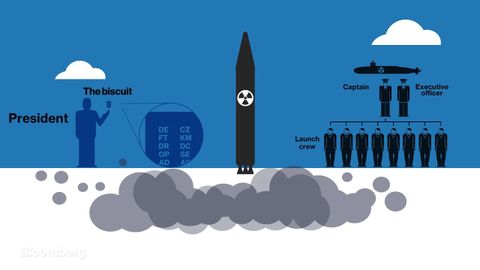米国の核攻撃は実際にどのように機能するのか (How a U.S. Nuclear Strike Actually Works)
jamesjung が 2021 年 01 月 14 日 に投稿  この条件に一致する単語はありません
この条件に一致する単語はありませんUS /ˈʌltəmɪtli/
・
UK /ˈʌltɪmətli/
US /ɔˈθɛntɪk/
・
UK /ɔ:ˈθentɪk/
- adj.本物の : 正真正銘の : 信頼のおける : 確実な
US /ˌsɪtʃuˈeʃən/
・
UK /ˌsɪtʃuˈeɪʃn/
US /saɪməlˈtenɪəslɪ/
・
UK /ˌsɪməl'teɪnɪəslɪ/
エネルギーを使用
すべての単語を解除
発音・解説・フィルター機能を解除

